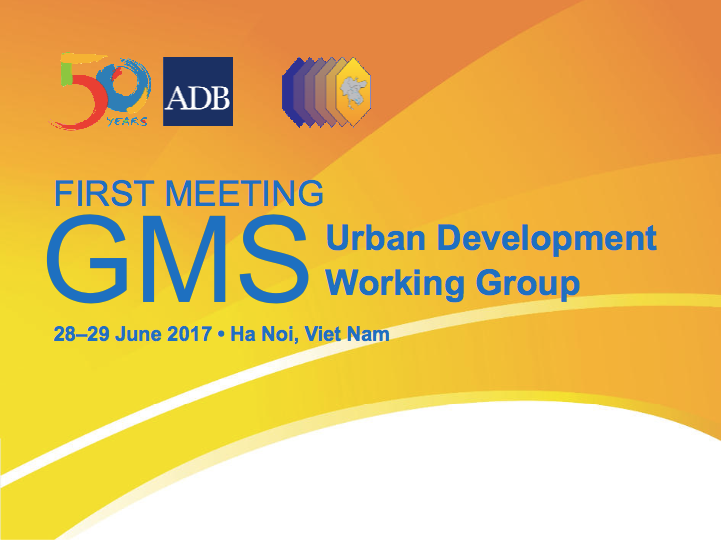Mobilizing Private Capital for Infrastructure in the Greater Mekong Subregion
Mekong governments need to create an enabling environment for public-private partnerships in infrastructure. Here are 4 ways to get the job done.
The Greater Mekong Subregion is working to improve the quality of life and economic vibrancy of its cities and towns by using global best practices in urban development.
The Urban Development Working Group oversees urban development and economic zones as new areas of cooperation in the subregion.
By 2050, the Greater Mekong Subregion is expected to be at least 50% urbanized. This will bring vast changes to the economies of the subregion. What was once a primarily agricultural area is transforming into a place where cities and towns are the main drivers of economic growth. Careful planning is needed to balance urban growth with environmental protection and economic equity so that healthy cities can be enjoyed by all residents.
The Greater Mekong Subregion is working to improve the quality of life and economic vibrancy of its cities through the development of national strategies and projects that incorporate global best practices into the subregion’s urban development. This work has included the first and second Corridor Towns Development Project, which is developing competitive and environmentally friendly cities along vital economic arteries in the subregion. Cross-border economic zones are also being developed.
The COVID-19 pandemic inevitably will leave its mark on cities, physically and socially, echoing for generations to come. This is already evident in terms of urban life. The GMS Program will focus on these effects with measures to respond to current and future crises. The GMS Economic Cooperation Program Strategic Framework 2030 (GMS-2030) will encourage a holistic approach to the future planning of cities so that they are green, smart, competitive, resilient, safe, and inclusive. It will also promote linkages between cities to develop new urban clusters and maximize economies of agglomeration, develop cities in border areas, create linkages with special economic and industrial zones, and improve waste management and pollution in cities located close to GMS rivers and seas. GMS-2030 was endorsed and adopted at the 7th GMS Summit of Leaders in September 2021. It aims to provide a new setting for the development of this subregion for the next decade.
Related
• Urban Development in the Greater Mekong Subregion
• Greater Mekong Subregion Urban Development Strategic Framework
• Second Greater Mekong Subregion Corridor Towns Development Project
• Urban Development Working Group
Focal Persons at the Asian Development Bank
Alan Baird
Water and Urban Development Sector Office Sectors Group
Hinako Maruyama
Water and Urban Development Sector Office Sectors Group
Other Concerned Staff & Consultants
Antonio Ressano
Regional Cooperation and Integration Unit
Southeast Asia Department
Alma Canarejo
Regional Cooperation and Integration Unit
Southeast Asia Department/GMS Secretariat
Send inquiries to GMS Secretariat.
Mekong governments need to create an enabling environment for public-private partnerships in infrastructure. Here are 4 ways to get the job done.
The Lao People’s Democratic Republic is operating its first dry port in Savannakhet province, where it is strategically positioned along the Greater Mekong Subregion East-West Economic Corridor, at the mid-point between the nearest Vietnamese seaport of Danang, and Thai ports in Bangkok and Laem Chabang.

This is the summary of proceedings of the First Meeting of the Greater Mekong Subregion Urban Development Working Group held in Ha Noi, Viet Nam from 28 to 29 June 2017.

This discussion paper focuses on the urban aspects of Greater Mekong Subregion corridor development and what will be needed to bolster the competitiveness of the region.
The subregion is one of the least urbanized areas in the world, but its cities are growing and their economic impact is being felt.
Special economic zones combined with economic corridors are a potent force for prosperity in the Greater Mekong Subregion.
Thailand is rolling out an ambitious plan to transform the eastern part of the country into an investment, technology, and transportation hub, where all the economic corridors of the Greater Mekong Subregion converge.
In Kunming, governors and key local government officials from provinces along the borders of the Greater Mekong Subregion came together on 10 June 2017 to discuss further cooperation.
Vulnerable towns in Cambodia, Lao People’s Democratic Republic, and Viet Nam are using “green infrastructure” to stave off the impacts of climate change.
The Myanmar government recently approved a project that will ensure the completion of the Greater Mekong Subregion East-West Economic Corridor, which stretches from Danang, Viet Nam to Yangon, Myanmar.